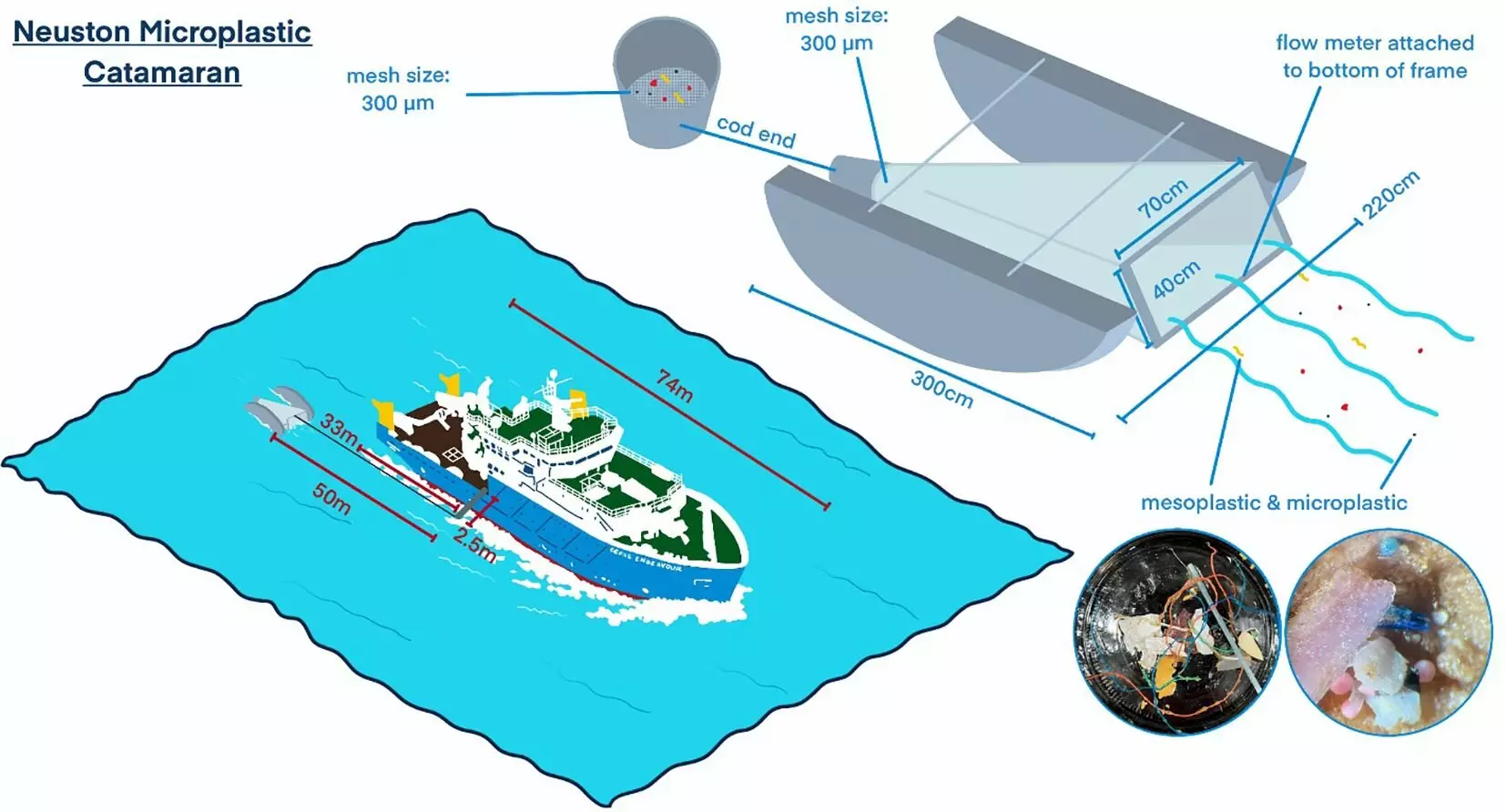Microplastic pollution represents a crisis that is increasingly gaining attention as our oceans become repositories for a staggering amount of plastic waste. The images often associated with this phenomenon—marine life ensnared in discarded fishing gear or tiny plastic flecks strewn across once-pristine beaches—serve as poignant reminders of the gravity of the situation. However, these visible manifestations only scratch the surface of a much deeper problem. Recent estimates suggest that as much as 12.7 million tons of plastic enter our oceans each year, primarily from rivers, fisheries, and shipping activities. As alarming as these figures are, the quantity of plastics detected on the surface often dramatically underrepresents the total amount polluting our seas. This discrepancy raises questions about hidden microplastic sinks in marine environments, exacerbating the crisis of plastic waste.
Recent research has pinpointed the North Sea as a critical area for understanding the phenomenon of microplastic accumulation. Dr. Danja Hoehn and her team from the Center for Environment, Fisheries and Aquaculture Science in the U.K. conducted a thorough study in 2022 utilizing a cutting-edge Neuston Microplastic Catamaran, designed specifically to capture floating plastic debris. Their findings revealed alarmingly high concentrations of microplastics in the coastal Southern Bight of the North Sea, with an average of approximately 8,700 items per square kilometer. This figure outstrips concentrations noted in surrounding offshore waters, such as those off the coast of Scotland and northeast Atlantic regions, where averages dropped to about 4,500 and 3,200 items per square kilometer, respectively.
Diving deeper into the issue, it’s evident that the types of plastics contributing to this pollution are equally concerning. The study identified that polyethylene alone made up 67% of the microplastics surveyed, used largely in common household items like shopping bags and children’s toys. Polypropylene and polystyrene followed, accounting for 16% and 8% respectively, and illustrating the pervasive nature of plastic in everyday life. Surprisingly, mesoplastics (5 to 25 mm) and macroplastics (over 25 mm) also constituted a portion of the pollution, suggesting a continuous cycle of plastic breakdown that renders these materials even more hazardous to marine ecosystems.
It’s worth mentioning that while certain harmful components, like microbeads in personal care products, have been banned in the U.K. since 2018, their ongoing presence indicates the transboundary nature of plastic pollution due to ocean currents transporting materials from other regions. The variety of colors identified in plastics—ranging primarily in white shades—further complicates efforts to manage and mitigate marine litter.
The identification of pollution hotspots, notably near East Anglia, reveals both a localized and widespread problem influenced by a myriad of factors, including global plastic demand, which currently exceeds 400 million tons annually. Alarmingly, even the noted concentrations in the North Sea are significantly lower than those previously documented in other parts of Europe, such as northwest Spain or the Canary Islands.
Globally, multiple initiatives are underway to combat the rising tide of plastic pollution. These include the UK’s Marine Strategy, which aims to develop indicators for microplastics in marine sediments, and the North-East Atlantic Environmental Strategy targeting the reduction of marine litter. Furthermore, the United Nations is advocating for a legally binding framework, hoping to eradicate plastic pollution by the year 2040. Despite these efforts, the persistent growth of plastic consumption poses an ongoing challenge.
Every year, the dilemma of microplastic pollution grows more complex, compelling scientists, policymakers, and the general public to take action. Understanding the intricate dynamics of plastic contamination is crucial for developing effective management strategies. Consequently, there remains a considerable opportunity for collaborative international action to mitigate this pressing environmental threat. It is imperative to foster a commitment towards sustainable practices that prioritize the health of our oceans, ensuring their preservation for generations to come.


Leave a Reply